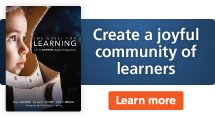Based on The Quest For Learning: How To Maximize Student Engagement
Have you ever tried to pry yourself or someone else away from an immersive experience? You might hear back, “Just a few more minutes … then I can stop,” or “When I figure this out, then it is a good time to take a pause.” The real value of games is in how they balance problem solving and engagement. They do this with no sense of failure but rather a commitment to hope and gamers’ genuine belief that if they keep trying and working, they will win.
This idea is captured well by Jane McGonigal, a game designer, and her TED talk, Reality is Broken: Why Games Make Us Better and How They Can Change the World. She describes gamers as believers in the “epic win,” that they can and will solve globally epic problems if they just work hard enough at it. Even in the face of repeated failure or rejection, gamers come back for one more try because they are always this close to the next level. Anyone who has played Super Mario Bros. and repeatedly defeated Bowser, only to find that the princess had been moved, knows this dedication deeply.
Complex games often have a number of different win states, allowing a number of different solutions or strategies to be effective in solving the given problems. When a player has won using one strategy, he or she will often replay the game using a new strategy.
Let’s go further and consider how this learning process is hardwired into the human brain. Well-designed games tend to give us the content information we need just when we need it, so that the content has meaning for us and is immediately applied. Important knowledge is shared between the player and parts of the game play that give information we do not know already (in-game smart tools), which allow us to be active players before we are fully competent.
In addition, there are different areas within games, with different ways of teaching how to play. In tutorials, training grounds, sandboxes, and scrimmages, we play the game in simplified versions and begin to know what it feels like, so we have a context for wanting to work hard to learn more. In these areas of the game, we learn, hone, practice, and test skills before we attempt the real game.
Aligning to Daily Instructional Practice
To maximize student engagement in the classroom, it is important that teachers understand how the addictive nature of problem solving in a game works. To that end, in our recently released Solution Tree book The Quest for Learning: How to Maximize Student Engagement, we crafted three learning tenets to guide the design process. These tenets are true whether starting with a game-design lens or another lens such as project-based learning or challenge-based learning.
| Learning Tenet One: Learning is an active, intentional process of constructing meaning from information and experience through a cycle of expertise. | |
| Component | Desired Instructional Impact |
| Active | A cycle that is iterative, where learner is involved in the cycle. |
| Intentional Process | Use of regular formative assessments to monitor student skill development and check in on their ideas/approaches. |
| Constructing Meaning | Creating a learning plan with specific next steps that are aligned to learning strategies gives meaning on two levels: 1) meaning about what the learner knows about the target, and 2) meaning about learning strategies that work for the learner. |
| Cycle of Expertise | Feedback is an essential element of the cycle of expertise, to identify what has been learned. This allows failure to be a natural part of the cycle. |
| Learning Tenet Two: Effective learning honors and stretches someone’s ability to learn strategically. A trusted adviser can offer insight into the challenge being faced, suggest a smaller goal to achieve the larger purpose or mission, provide compassion for the struggles along the way, and celebrate joyful moments. | |
| Component | Desired Instructional Impact |
| Strategy | Feedback allows the learner to develop a strategy for next steps, learning strategies that can support developing a win state. |
| Challenge | Feedback works best when connected to something worth doing. A challenge inspires the desire to try. |
| Joy in Learning | Timely feedback about what we know and what we can do next is connected to joy in the brain. We get excited when we are given useful feedback. |
| Learning Tenet Three: Learning is a social activity that benefits from sharing. This space grows everyone, from novice to expert, because of multiple ways to participate and multiple routes to get status. | |
| Component | Desired Instructional Impact |
| Social Activity | Creating an environment where learners feel safe communicating their thinking—ideas, alternate points of view, approaches. |
| Participate in Multiple Ways | Intentionally design a diverse set of roles that are integral to the problem or task but also require thoughtfulness of other individuals (interpersonal) as well as achieving the desired goal (collaboration). |
| Status | Clarify what status looks like and how you are ensuring a sense of fairness for all learners. Thinking about organizing a level of expertise. For example, beginning with growing baseline knowledge and skills, applying knowledge and skills to solve more complex problems, and using expertise to grow other learners in their journey. |
Applying these tenets and thinking about learning as addictive problem solving is game-changing. (See what we did there?) Students don’t want to be handed platefuls of content knowledge to choke down and regurgitate. They want to explore, discover, tweak, create, recreate, evaluate, and share. To learn about applying game design to your curriculum, check out our book The Quest for Learning: How to Maximize Student Engagement for a deeper look at both the theory and the practice.
References:
Alcock, M., Fisher, M., & Zmuda, A. (2017). The quest for learning: How to maximize student engagement. Bloomington, IN: Solution Tree.
McGonigal, J. (2011). Reality is broken: Why games make us better and how they can change the world. New York: Penguin Press.
[author_bio id=”1446″]
[author_bio id=”1485″]
[author_bio id=”1344″]






